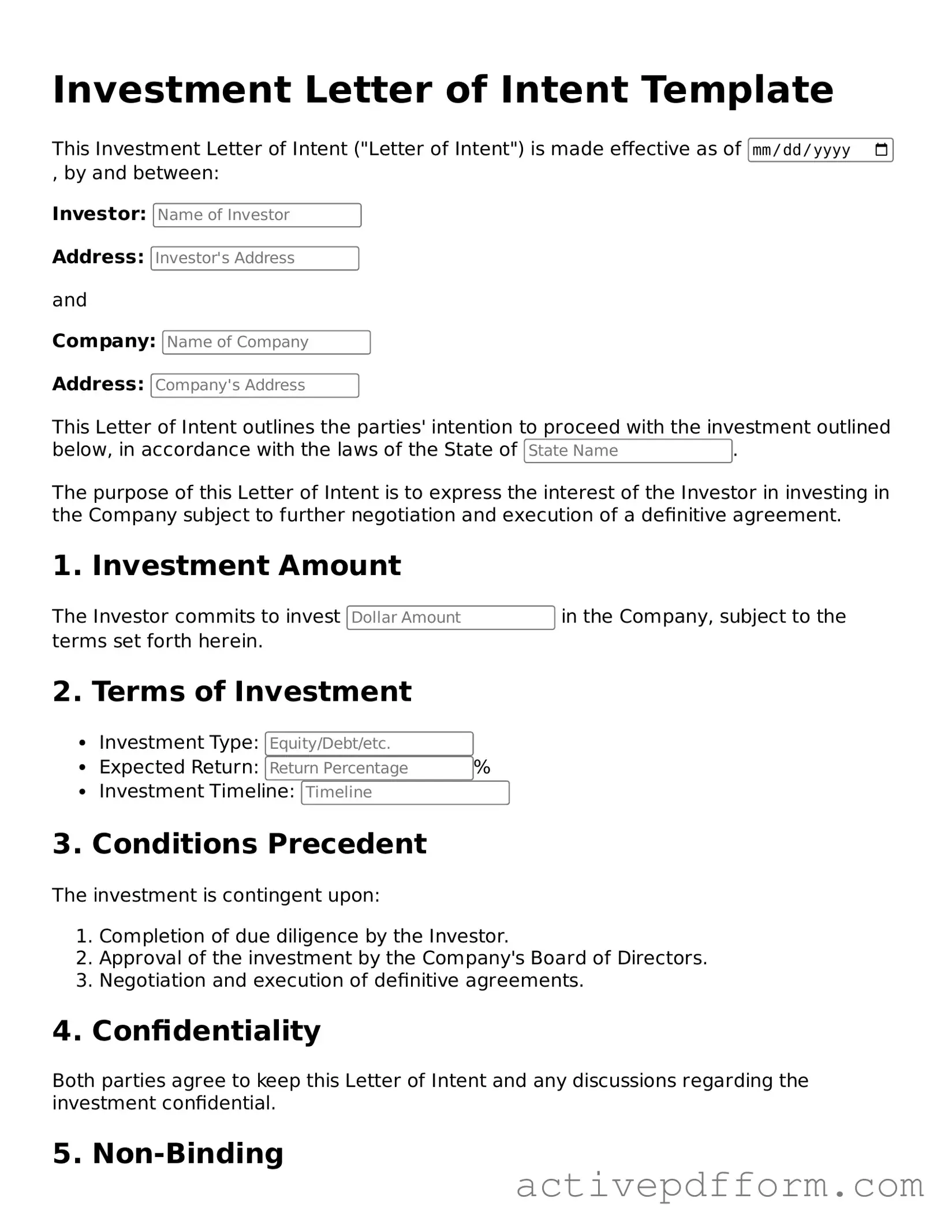Blank Investment Letter of Intent Document
The Investment Letter of Intent is a preliminary document that outlines the intentions of parties involved in a potential investment. This form serves as a starting point for negotiations, helping to clarify the terms and expectations before formal agreements are finalized. If you’re ready to take the next step, fill out the form by clicking the button below.
Access Investment Letter of Intent Editor Here
